143 results
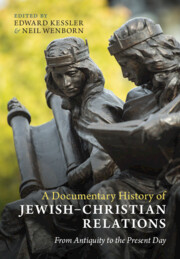
A Documentary History of Jewish–Christian Relations
- From Antiquity to the Present Day
-
- Published online:
- 03 October 2024
- Print publication:
- 17 October 2024
Rowan Williams’ Theology of Revelation
-
- Journal:
- Journal of Anglican Studies , First View
- Published online by Cambridge University Press:
- 15 April 2024, pp. 1-10
-
- Article
-
- You have access
- HTML
- Export citation
The apple of God's eye: a biblical account of holiness
-
- Journal:
- Religious Studies , First View
- Published online by Cambridge University Press:
- 11 April 2024, pp. 1-15
-
- Article
-
- You have access
- Open access
- HTML
- Export citation
5 - Devotional Experience
-
- Book:
- Ways of Living Religion
- Published online:
- 07 March 2024
- Print publication:
- 14 March 2024, pp 180-224
-
- Chapter
- Export citation
3 - The Inescapability of the Canon
-
- Book:
- What Is a Classic in History?
- Published online:
- 15 February 2024
- Print publication:
- 22 February 2024, pp 138-205
-
- Chapter
- Export citation
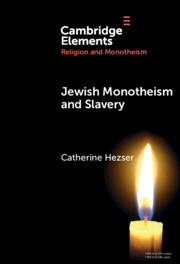
Jewish Monotheism and Slavery
-
- Published online:
- 19 February 2024
- Print publication:
- 14 March 2024
-
- Element
- Export citation
I.1 - Patrick, Confession
- from Fifth Century
-
- Book:
- The Cambridge Anthology of British Medieval Latin
- Published online:
- 11 January 2024
- Print publication:
- 01 February 2024, pp 37-42
-
- Chapter
- Export citation
II.28 - The Study of Latin and Other Languages
- from Thirteenth Century
-
- Book:
- The Cambridge Anthology of British Medieval Latin
- Published online:
- 11 January 2024
- Print publication:
- 01 February 2024, pp 267-283
-
- Chapter
- Export citation
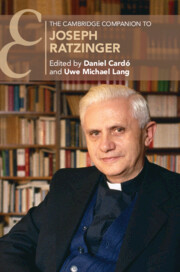
The Cambridge Companion to Joseph Ratzinger
-
- Published online:
- 25 January 2024
- Print publication:
- 21 December 2023
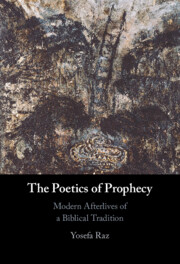
The Poetics of Prophecy
- Modern Afterlives of a Biblical Tradition
-
- Published online:
- 14 December 2023
- Print publication:
- 21 December 2023
Adoniram Judson's Burmese Bible: Dependency and Development
-
- Journal:
- Church History / Volume 92 / Issue 4 / December 2023
- Published online by Cambridge University Press:
- 19 March 2024, pp. 822-844
- Print publication:
- December 2023
-
- Article
-
- You have access
- HTML
- Export citation
Chapter 16 - Decolonizing the Bible as Literature
- from Part III - Interdisciplinarity and Literary Studies
-
-
- Book:
- Decolonizing the English Literary Curriculum
- Published online:
- 02 November 2023
- Print publication:
- 09 November 2023, pp 315-330
-
- Chapter
-
- You have access
- Open access
- HTML
- Export citation
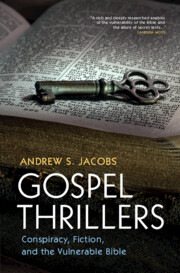
Gospel Thrillers
- Conspiracy, Fiction, and the Vulnerable Bible
-
- Published online:
- 09 November 2023
- Print publication:
- 30 November 2023
Chapter 8 - Religion
- from Part II - Contexts and Controversies
-
-
- Book:
- The Cambridge Companion to Literature and Animals
- Published online:
- 26 October 2023
- Print publication:
- 09 November 2023, pp 153-169
-
- Chapter
- Export citation
Chapter 3 - ‘Revelation’ for Christians and Pagans and Its Philosophical Allegoresis
- from Part I - Philosophical Perspectives on Divination, Revelation, and Prophecy
-
-
- Book:
- Divination and Revelation in Later Antiquity
- Published online:
- 19 October 2023
- Print publication:
- 02 November 2023, pp 49-72
-
- Chapter
- Export citation
12 - Words Thrown Out
- from Part VI - Intellectual Superstars
-
-
- Book:
- Victorian Engagements with the Bible and Antiquity
- Published online:
- 28 September 2023
- Print publication:
- 12 October 2023, pp 311-357
-
- Chapter
- Export citation
1 - Introduction
-
-
- Book:
- Victorian Engagements with the Bible and Antiquity
- Published online:
- 28 September 2023
- Print publication:
- 12 October 2023, pp 1-16
-
- Chapter
- Export citation
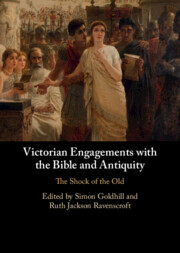
Victorian Engagements with the Bible and Antiquity
- The Shock of the Old
-
- Published online:
- 28 September 2023
- Print publication:
- 12 October 2023
Jordan Peterson's Confusion over Religious Symbolism: A Lesson from Cain and Abel
-
- Article
-
- You have access
- HTML
- Export citation
2 - Naming God at Sinai The Gift of the Name
-
- Book:
- Naming God
- Published online:
- 30 June 2023
- Print publication:
- 20 July 2023, pp 9-39
-
- Chapter
- Export citation

